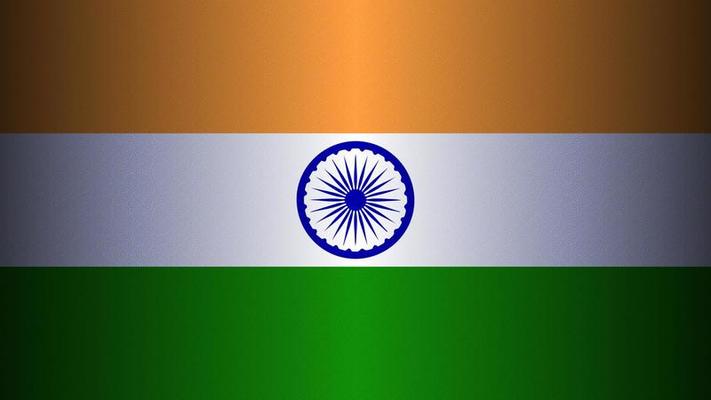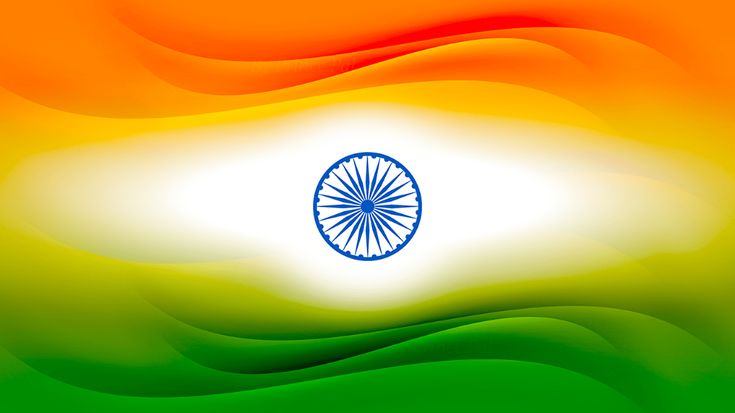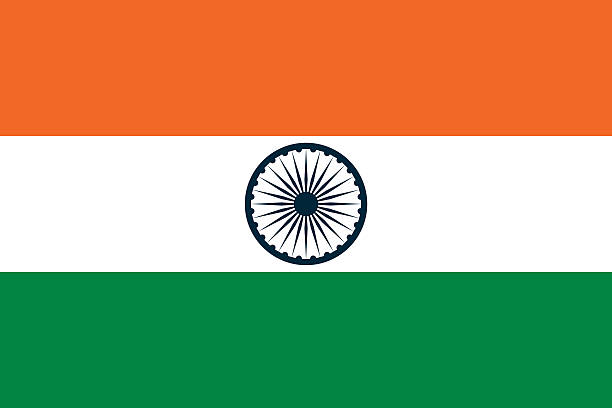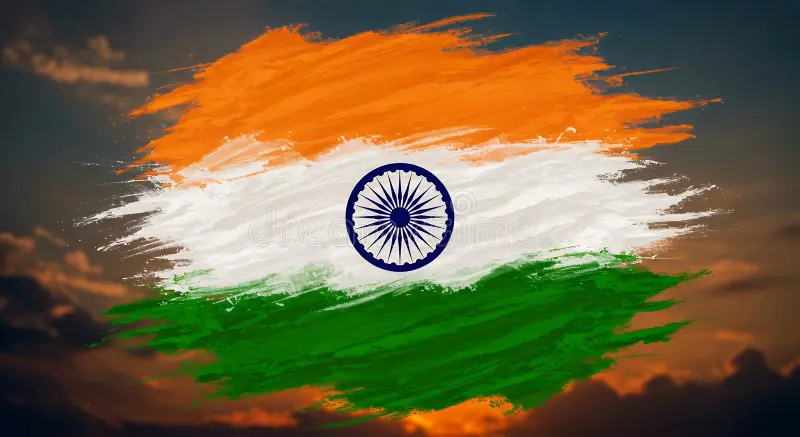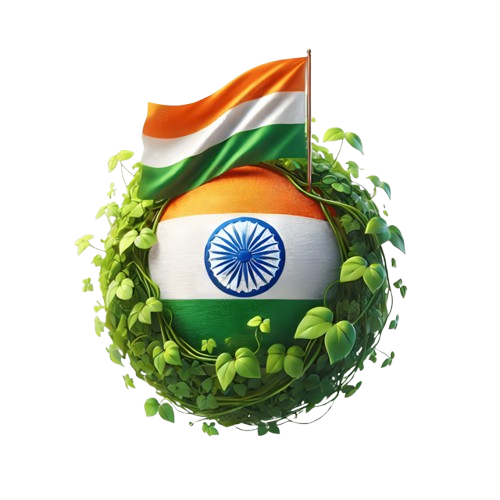
The Tiranga: Symbol of India's Unity and Pride
Introduction
The Indian national flag, popularly known as the Tiranga, is more than just a piece of fabric. It is a powerful symbol of India’s identity, unity, and independence. It represents the aspirations of a billion people and narrates the story of India’s freedom struggle, its core values, and its journey as a sovereign republic. Adopted officially on July 22, 1947, just before India gained independence, the Tiranga has become a central element of national pride and patriotism.
This article explores the historical evolution, design, symbolism, cultural relevance, and the role of the Tiranga in modern India.
1. Historical Evolution of the Indian National Flag
1.1. The First National Flag (1906)
The concept of a national flag first took shape during the Indian independence movement. The first unofficial flag was hoisted on August 7, 1906, in Parsee Bagan Square (now Green Park) in Calcutta (now Kolkata). This flag consisted of three horizontal stripes of green, yellow, and red. It had symbols like the lotus and the sun, along with the words “Vande Mataram” inscribed in the center.
1.2. The Berlin Committee Flag (1907)
In 1907, another version of the flag was hoisted by Bhikaiji Cama in Paris, often referred to as the Berlin Committee flag. It closely resembled the 1906 flag, with some changes in the design and color.
1.3. The Home Rule Movement Flag (1917)
During the Home Rule Movement led by Annie Besant and Bal Gangadhar Tilak, a new version of the flag was introduced. It had five red and four green horizontal stripes, arranged alternately, and seven stars representing the Saptarishi constellation. A Union Jack was placed at the top left corner.
1.4. The Gandhi Flag (1921)
In 1921, during the Indian National Congress session in Bezwada (now Vijayawada), Mahatma Gandhi proposed a new flag designed by Pingali Venkayya. It had two main colors—red and green—symbolizing Hindus and Muslims, respectively. A white stripe was later added for other communities and a spinning wheel (charkha) was placed at the center to represent self-reliance.
1.5. The Flag of Independent India (1947)
On July 22, 1947, the Constituent Assembly adopted the current tricolor as the national flag of India. The spinning wheel was replaced with the Ashoka Chakra to represent the eternal wheel of law and progress. This was a unifying symbol for a secular, democratic India.
2. Design and Composition
2.1. Description
The national flag of India is a horizontal tricolor of deep saffron (Kesaria) at the top, white in the middle, and dark green at the bottom in equal proportion. In the center of the white band is a navy-blue wheel (Ashoka Chakra) with 24 spokes.
2.2. Dimensions
According to the Flag Code of India, the flag must have a ratio of 3:2 (length: height). It must be made from khadi, a hand-spun and handwoven cloth, as a tribute to Mahatma Gandhi’s advocacy for self-reliance.
2.3. The Ashoka Chakra
The 24-spoke Ashoka Chakra is derived from the Lion Capital of Ashoka, a symbol of dharma (law). It reflects the idea of moving forward constantly in pursuit of justice and progress. The chakra replaces the spinning wheel from earlier versions, symbolizing a more inclusive and universal concept.
3. Symbolism of the Colors
Each color in the Tiranga holds deep philosophical and cultural significance:
3.1. Saffron (Top Stripe)
Saffron represents courage, sacrifice, and the spirit of renunciation. It is a color traditionally associated with saints and monks in Indian culture. It calls upon the nation’s leaders to remain detached from material gain and to serve selflessly.
3.2. White (Middle Stripe)
White stands for peace, purity, and truth. It also symbolizes light and the path of righteousness that the nation must follow. In a country as diverse as India, white acts as a unifying element, representing neutrality and clarity.
3.3. Green (Bottom Stripe)
Green represents fertility, growth, and auspiciousness of the land. It reflects the agricultural economy of India and the nation’s commitment to sustainable development.
3.4. The Ashoka Chakra (Blue Wheel)
The Ashoka Chakra symbolizes the eternal wheel of law. The 24 spokes represent the 24 hours of the day, emphasizing the importance of constant movement and progress. It also reflects ideals like justice, democracy, and equality.
4. Legal Aspects and the Flag Code of India
4.1. The Flag Code
The Flag Code of India was first issued in 2002 to consolidate all laws and practices regarding the national flag. It allows ordinary citizens to hoist the flag on any day, provided it is done with dignity and respect.
4.2. Do’s and Don’ts
Some key points from the Flag Code:
The flag must never touch the ground or water.
It should not be used as a drapery, costume, or for commercial purposes.
Damaged or disheveled flags must be disposed of respectfully, preferably by burning in private.
4.3. Amendments and Digital Use
In 2021, amendments allowed for the use of synthetic material in addition to khadi, enabling mass production. In 2022, to mark 75 years of independence, people were encouraged to hoist the flag digitally as part of the “Har Ghar Tiranga” campaign.
5. Cultural and Emotional Significance
5.1. During Independence and Republic Days
The national flag is prominently hoisted at the Red Fort on Independence Day (August 15) and at Rajpath (Kartavya Path) during the Republic Day parade (January 26). These events celebrate India’s sovereignty and constitution.
5.2. In Sports and International Events
The Tiranga is a source of immense pride when it is raised at international sports events, including the Olympics, cricket matches, and global forums. The sight of athletes saluting the flag during national anthems evokes deep patriotism.
5.3. Martyrs and National Heroes
The flag is used to honor the sacrifice of soldiers and freedom fighters. It is draped over the coffins of martyrs, a gesture that symbolizes national gratitude.
6. The Tiranga and National Integration
6.1. Unifying a Diverse Nation
India is home to over 1.4 billion people, speaking hundreds of languages and practicing various religions. The Tiranga acts as a symbol of unity in diversity, embodying the collective identity of all Indians.
6.2. Political and Social Unity
The flag transcends political ideologies and religious beliefs. Whether during elections, social movements, or crises, the Tiranga becomes a rallying point for national solidarity.
6.3. Flag as a Tool for Civil Protest
Throughout history, the Tiranga has also been used in peaceful protests—most recently in the India Against Corruption movement (2011) and the Farmer Protests (2020-2021). Citizens carrying the national flag asserted their rights while remaining committed to democratic ideals.
7. Tiranga in Popular Culture
7.1. In Film and Music
Bollywood has played a key role in popularizing the Tiranga through patriotic films and songs such as “Maa Tujhe Salaam”, “Vande Mataram”, and “Rang De Basanti”. These portray the emotional and spiritual connection Indians share with the flag.
7.2. Artistic Representations
Artists often depict the Tiranga in murals, digital art, and fashion during national holidays. Schools, colleges, and public buildings are decorated with the tricolor to mark important events.
7.3. Role in Education
The national flag is an essential part of moral and civic education in Indian schools. Children are taught to salute the flag and understand its meaning from a young age, instilling patriotism and respect for national symbols.
8. Challenges and Misuse
8.1. Commercialization
The commercialization of the Tiranga, especially during festivals and cricket matches, sometimes leads to misuse. Disposable plastic flags, often discarded carelessly, dishonor the spirit of the flag.
8.2. Ignorance of Flag Etiquette
Despite legal frameworks, public awareness about proper flag etiquette remains low. Educating people about respectful use is still a work in progress.
9. Recent Developments
9.1. Har Ghar Tiranga Campaign
As part of the Azadi Ka Amrit Mahotsav in 2022, the government launched the “Har Ghar Tiranga” campaign to encourage citizens to hoist the national flag at their homes. This led to a nationwide wave of patriotism and a renewed interest in the flag’s meaning.
